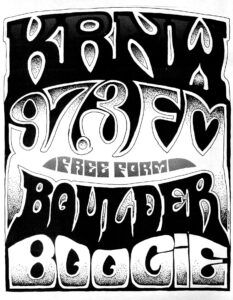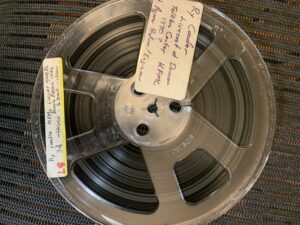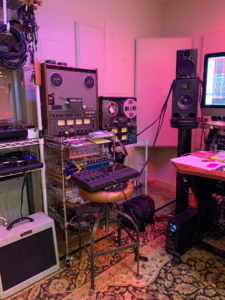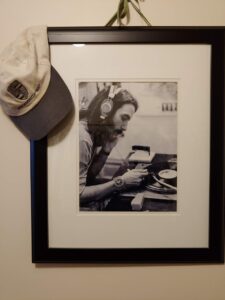Freeform Radio Archive

We’ve written here in several previous pieces about our project to develop a freeform radio archive. Hopefully, we already answered why we want to do it. Suffice it to say it was a critically important aspect of radio history that is in danger of becoming if not forgotten then perhaps not much more than an asterisk. It deserves much better.
One reason it was such a vital part of that history is the role it played in creating the classic era of rock & roll. Another is the very bright light it shined on how the public airwaves can be used to serve their owners – the public – rather than their common usage in serving their licensees and the advertisers who enrich them. The latter had a lot to do with making the former possible.
So, the questions then are who, what, where and how. The who is me with a tremendous amount of support from people who were there when it all happened and want the story to be told. It’s their story, after all, and they know how fine it was. They know how unique and special that form of radio was because they were the people who made it come together, who listened, who advertised, who took the time to record what was happening and saved the tapes all these years.

People like Ham Agnew, who was the engineer at KFML radio and had the good sense not only to record some of what was happening – strictly at his own expense, mind you – but also to preserve those tapes in climate-controlled conditions for all these years since. Likewise Dan Fong, who spent a day taping some of the radio shows that were produced 24/7 day after day and then vanished into the ethers, except for those excellent shows he captured that day and saved for posterity.
Thanks to those two gentlemen, we have some 40 hours of tape recordings that we are having converted to digital format by Bob Webber at SCP Recording at his studio just outside Denver. The process involves first baking the magnetic tapes to cure any oxidation that has taken place, then running the reel-to-reel version through his Prosound equipment where the glitches are removed and the final product is downloaded to Dropbox.

Those tapes include more than 15 hours of live-cast performances by people like Bonnie Raitt, Tom Rush, Willis Alan Ramsey, and others whose shows were broadcast live to the KFML audience. There are also interviews with Frank Zappa and Townes Van Zandt. And, there are more than 20 hours of actual shows by deejays including Brian Kreizenbeck, Bill Ashford, Jerry Mills, Buffalo Chip, Harry Tuft, and Bill Szymczyk.
We also have more than 30 hours of video interviews with the people who did those shows at stations KMPX, KSAN, KPRI, KPPC, KSML, WLS, WMAS, WHVY, WBCN, and others. They and a few other folks who reviewed them, and a few more who just listened to them religiously in that long ago time and place will be presented just as they were recorded on Zoom as part of the standing archive.
Additionally, those interviews will be sliced and diced into a documentary presentation about freeform radio nationally, with a particular focus on KFML-AM & FM in Denver and and KRNW-FM in Boulder. Those two weren’t the first freeform stations, nor by any means the largest, but our research suggests that they may have been the very purest expression of that era of radical radio broadcasting.

Finally, we will have a documentary soundtrack by Ron Middag who, in 1967 under his nom de plume of Inor Gaddim at KPRI in San Diego, was among the very first freeform deejays in the country. That station was portrayed by Cameron Crowe in his seminal film of the era Almost Famous. Ron also worked with Tom Donahue, who is widely regarded as the father of freeform, and his spouse, Raechel Donahue, at KSAN in San Francisco, and at numerous other venues around the country.
So, that is the what. Where is on the internet in the domain of a not-for-profit organization that is chartered to provide education free to the public. This history of a unique era of broadcast radio and the people who made it is exemplary of what it is meant to do. We intend to provide the archival record and sustain it indefinitely.
Last question then is the how? As in, how to pay for it? That’s the rub, eh? Well, truth be told, every non-profit venture has to face up to this proof of concept. Do people really believe in what you’re doing? Enough to put their money where your mouth is? So, we’re getting near the point where the how is going to be explored. Fortunately, we’re not talking about a huge sum here, just the hard costs of building and maintaining the archive. Converting the tapes, editing the videos, filming the documentary, and leasing the technical pieces to support it. If the number of people who have expressed their enthusiasm for the project holds true, it should be very doable. One way of the other, we will get it done.
Oh, and one more question is when? Very soon, we hope!
hello James – you and I have spoken on the phone before, most recently about a year ago when I called ListenUp trying to find old Ebbets Field recordings. We discussed that venue, as well as KFML, and it led to me purchasing your book “What It Was”. You did a marvelous job on the book which deserves an honored place in the annals of all things rock and roll in Denver’s rich heritage of music. I came away with the impression that you are probably the only one who could have written that book, and it is so important that you DID write the book. I am glad to support your Freeform Radio Archive initiative and look forward to the “how” piece of the puzzle.
Hello again, John, and thank you for the very kind words. That era and its place in my life made a big impression on me, as did so many of the people I met along the way who taught me so much. It was remarkable to be part of it and I wanted to use my modest writing skills to get in down on paper – to honor those people and to make a view of it available to anyone who came along later and was curious about that scene. I thought like you it might have a place in Colorado history, but media and bookstores there haven’t shown much interest. Still, feedback like yours makes me very happy that I wrote it. Lots to say about the Freeform Radio Archive, too, so let me know when you’d like to hear it. Cheers and rock 2023!
Hello James, and a shout out to John (the butcher man) —
Former KFML listener here from up in the Fort at the time, where I met John and his collection of Italian Prog and more. It was always an effort to pull in KFML up there, but rewarding when I could. John may remember (vaguely) my TEAC RTR recorder. Years later, in the mid 80s, I used that to record perhaps 6-8 reels of WHFS out of DC then Annapolis. Another pioneering cast there. I have the tapes still but my TEAC froze, so I haven’t revisited those to see how they sound. Someday I will and wonder if there might be a way to put those to better use. A digital archive like this fits the bill. So I’ll stay tuned. All the best for 2024 and beyond. Pieter
Hello Tenny and thanks for checking in.